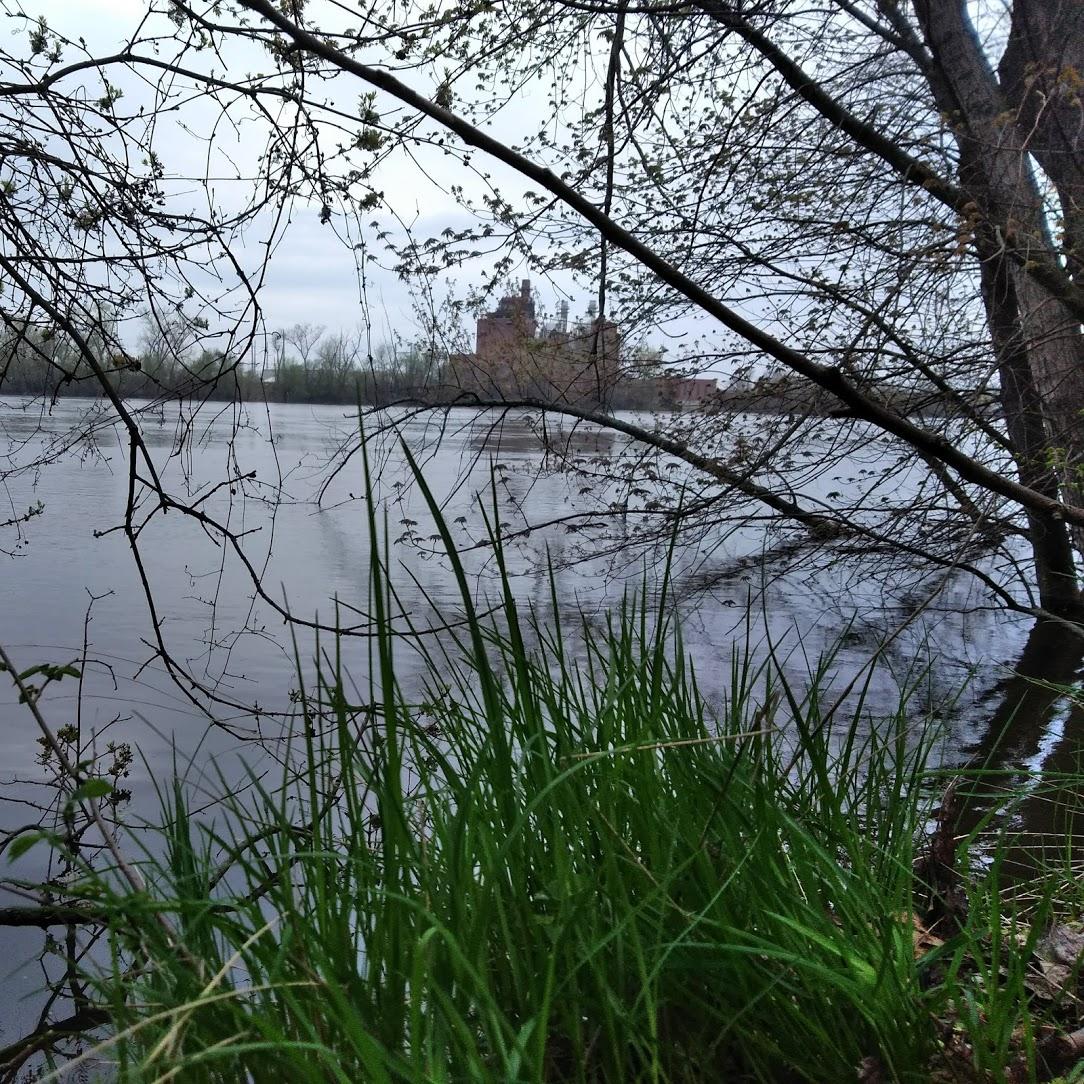‘Welter Of Jurisdictions’ Complicate Efforts To Clean Up Connecticut River

The Springfield Water and Sewer Commission and Bondi’s Island, across the Connecticut River from the Union Street combined sewer overflow or CSO. Photo by Jill Kaufman for NEPR
A very old sewer system is still in use at about 800 wastewater treatment plants in the U.S., including along the Connecticut River. It’s called “combined sewer overflow,” or CSO. What overflows into waterways is a mix of storm water, street runoff and raw sewage.
Every wastewater treatment plant in the country, by federal law, has a long-term plan to end their CSO use. How that’s happening, town-to-town and state-to-state, differs greatly. That’s evident on a relatively short stretch of the Connecticut River, as it flows from Springfield, Massachusetts, to Hartford, Connecticut. How water pollution permits are issued appears to be one of the greatest hurdles.
At the wastewater treatment plant in Springfield, the Environmental Protection Agency is running 17 years late on the CSO pollution permit. Specifically, it’s the National Pollutant Discharge Elimination System permit, or NPDES. The permit details how many gallons of CSO effluent are allowed per year, per pipe, and if plants need to adjust their system.
Springfield has 23 CSO outflows in the river — several located right behind the Basketball Hall of Fame. On a cloudy – but not rainy – day, Andrea Donlon, the Massachusetts river steward for the Connecticut River Conservancy, climbed over a fence and down an embankment to “Union Street CSO 15a and 15b.” She took a spreadsheet of 2016 CSO data out of her backpack.
